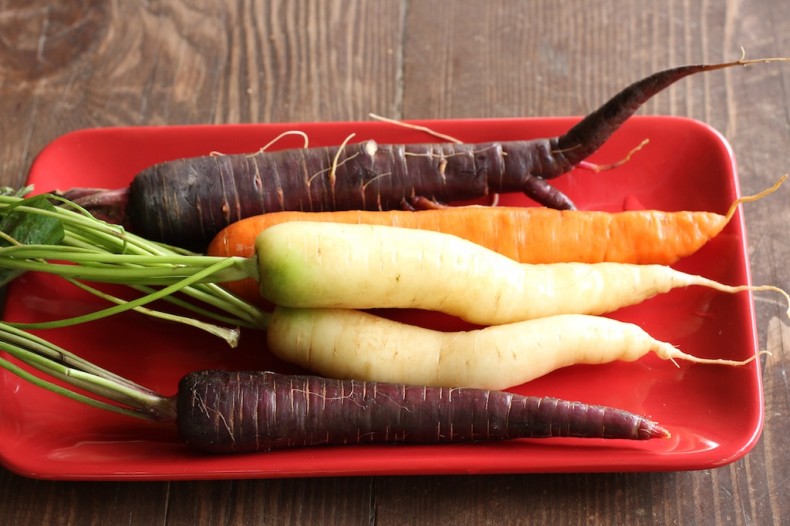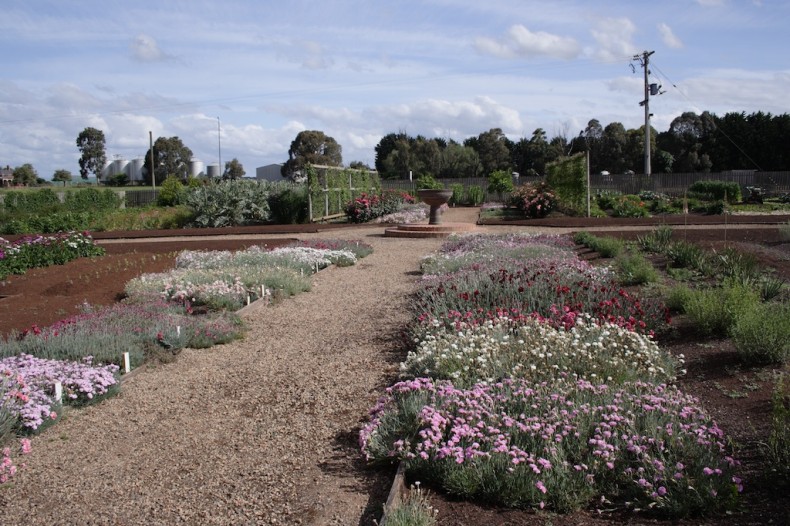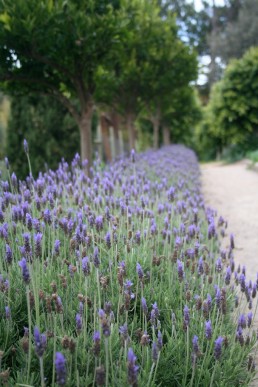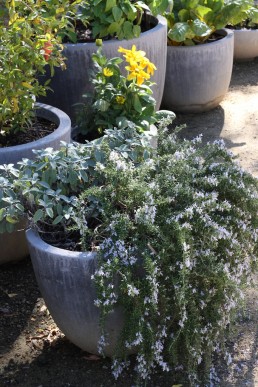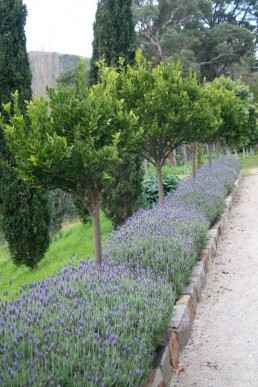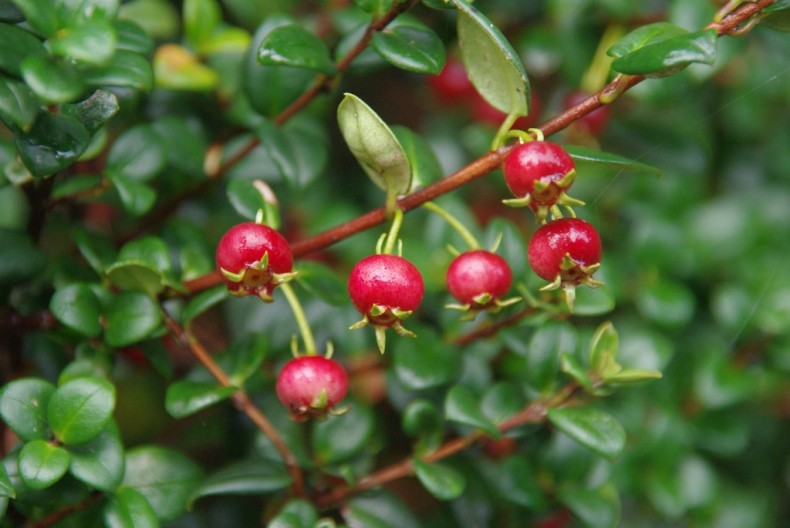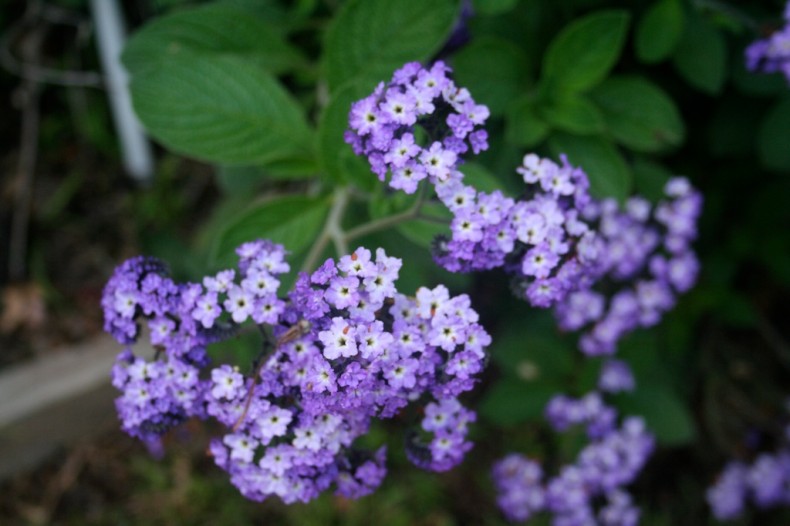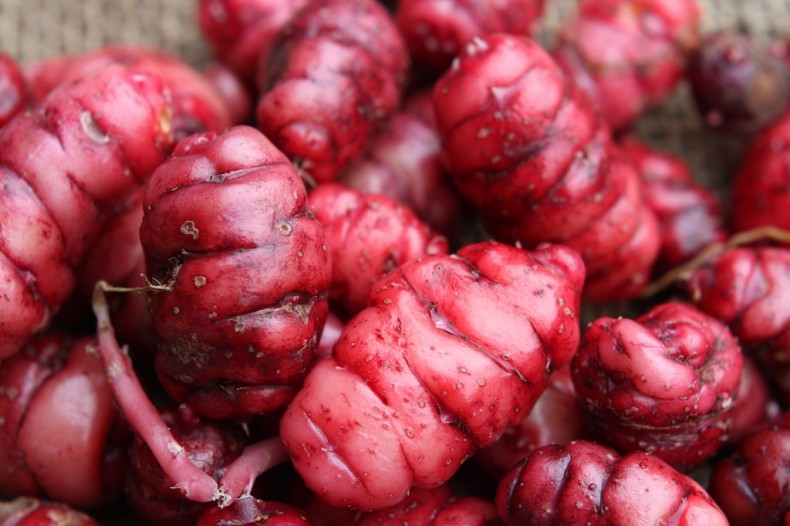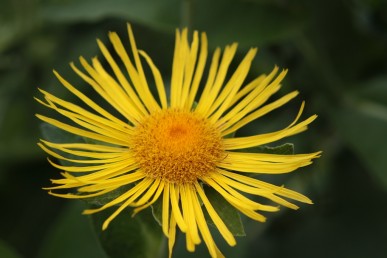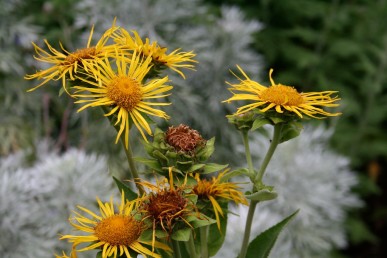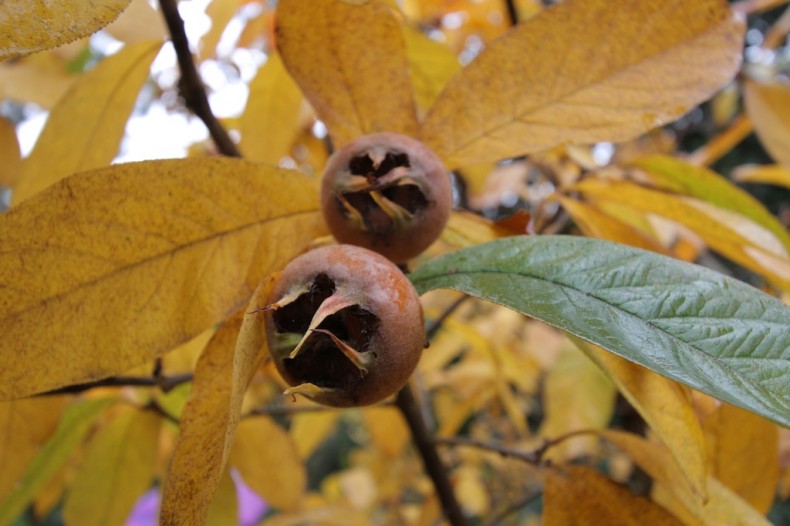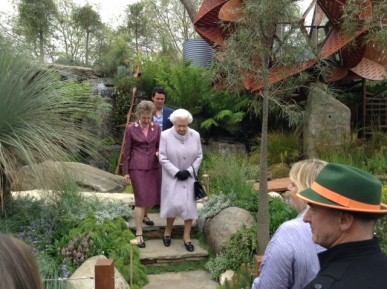Article and photos by Penny Woodward
The next few months are the perfect time to plant carrots of any colour in any region, but why not try purple carrots for a change? Purple carrots (Daucus carota Sativus Group ‘Purple Dragon’) were probably grown by early Romans who also grew white carrots, but it is believed that the first purple carrots came from Afghanistan, Pakistan and northern Iran. Purple, white and yellow carrots were imported to southern Europe in the 14th century and were widely grown in Europe into the 17th Century. Our familiar orange carrots only appeared in 16th century Holland when patriotic Dutch growers used seed from purple carrots and yellow Turkish carrots to produce orange roots, reflecting the colour of the ruling House of Orange. Over the ensuing centuries, orange carrots came to dominate and carrots of other colours were only preserved by growers in remote regions of the world. Purple carrots are still grown in Afghanistan where they are used by tribesmen to produce a strong alcoholic beverage. Continue Reading
Article and photos by Penny Woodward
Gillyflowers, carnations, pinks, sweet Williams, picotees, selfs and fancies, all names with which to conjure. These old-fashioned Dianthus species are all in the Caryophyllaceae along with well-loved flowers like gypsophila, herbs like soapwort and weeds such as chickweed. Heirloom Dianthus species and their more recent cultivars have been grown for their beauty and used in cooking and perfumery for hundreds if not thousands of years. The earliest recorded is probably D. caryophyllus, once known as gillyflowers and today more usually called carnations. In the first century AD, Pliny wrote that the clove carnation was discovered in Spain in the days of Augustus Caesar. Some of the varieties around in the 1700s had names like Lustie Gallant, Ruffling Robin and Fayre Maid of Kent. Continue Reading
Article and photos by Penny Woodward
Typically mediterranean plants, lavenders and rosemaries love well-drained, sandy soils and lots of sun, but hate humidity. More are killed by overwatering or planting into heavy soils, than for any other reason. Once planted in the right position the only care needed is regular pruning. French lavenders (Lavandula dentata) are great because they flower for most of the year, have a lovely mentholy lavender scent and provide nectar for bees, butterflies and beneficial insects.
Article and photograph by Gail Thomas
They’re aromatic, packed with flavour and are a great addition to both the edible or ornamental garden. Ugni molinae aka Tazziberries, ugni berries or Chilean guavas are now being grown commercially in Tasmania and Victoria. The Tasmanian growers started in the mid 1990′s and as a marketing ploy similar to kiwi fruit (Chinese gooseberries), called them Tazziberries as they believed it sounded better than Ugni molinae. These delicious pea sized berries boast a spicy strawberry/pineapple taste and an aromatic perfume that fills the autumn air. Sporting a deep burgundy hue with a creamy blush when ripe they lend themselves to both sweet and savoury applications, extending even liqueur or wine! Continue Reading
Article and photos by Penny Woodward
Heliotrope (Heliotropium arborescens) is also known as cherry pie because of its sweetly scented mauve and white flowers that are particularly beautiful in my garden right now. It is a woody perennial with small, rough, oval leaves and flat heads of small white to mauve flowers with a delicious vanilla/cherry scent. There are many modern varieties including ‘Alba’ a white flowered form and ‘Lord Roberts’ which has dark purple flowers and dark metallic-purple leaves. All types attract insects and butterflies to the flowers to feed on the abundant nectar.
Article and photos by Penny Woodward
Oca (Oxalis tuberosum), is also know as New Zealand Yam. Around this time of year you will begin to see them in lists from seed suppliers (although they are not grown from seed but from their tubers) and you might want to think about buying some to grow. You can get types that are any colour from a creamy pink right through to bright magenta and purple. In Australia we don’t yet have distinct cultivars available (as in the US and UK), but they all taste good so it doesn’t really matter. I grow a bright magenta coloured type that looks good combined with other foods and just lifts your spirits when you harvest them. Continue Reading
Article and photos by Penny Woodward
Elecampane Inula heleniun is a herbaceous perennial with very large leaves that grows from big fleshy roots. In late spring, a sturdy flower stalk grows to over 2 m with golden daisy flowers about 7 cm across. I love this plant for its exuberant, vigorous growth and big cheerful flowers. Continue Reading
Article and photos by Penny Woodward
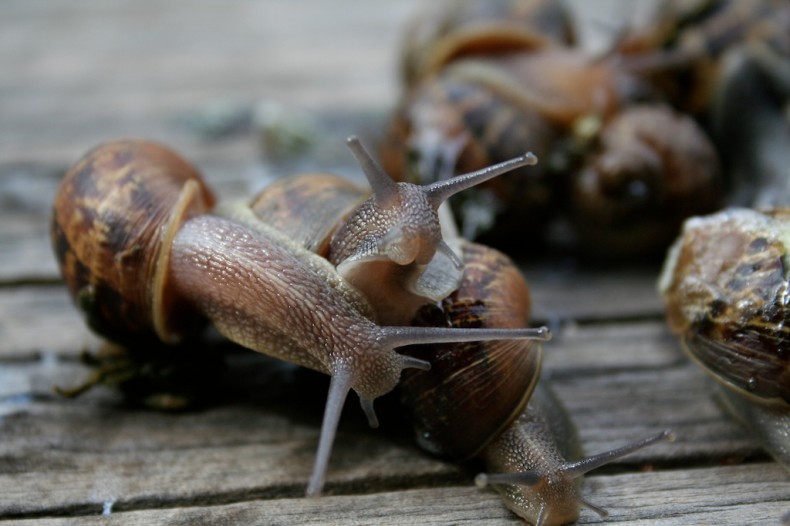 Usually when someone suggests coffee in the garden, they mean a cup of good strong brewed coffee in a lovely quiet spot in the garden. Bliss. But not me. Don’t get me wrong, I love my coffee, but when I talk about coffee and gardens I’m referring to its many other uses, from controlling snails to adding nutrients to the soil.
Usually when someone suggests coffee in the garden, they mean a cup of good strong brewed coffee in a lovely quiet spot in the garden. Bliss. But not me. Don’t get me wrong, I love my coffee, but when I talk about coffee and gardens I’m referring to its many other uses, from controlling snails to adding nutrients to the soil.
By Gail Thomas
Medlars (Mespilus germanica) have been cultivated for centuries and are an extremely ornamental and useful hardy tree native to the south-east Europe and the eastern part of Turkey.
Single white, sometimes pink flushed unscented flowers in late spring and vibrant russet reddish-brown foliage in late autumn add to the eye appeal of the round flattened tan fruit with its indented calyx and crown of pointed sepal remnants. Fruit matures to a dark brown in late autumn to early winter. Continue Reading
They did it! For the first time in 100 years Australians have won best in show at the Chelsea Flower Show. I am so thrilled that Wes Fleming and his team have finally achieved the “Impossible Dream” and done so well. And I love the garden with which they won it. Phillip Johnson’s designs have been inspiring me for years, exuberant and original and even from a distance it was clear that these values shone through to the judges.
I have been lucky to have been kept up to date with emails on a mailing list from Wes’s mum, Dawn and she beautifully described their reaction to the win. Continue Reading

